Scorpaeniformes is one of the five largest orders of bony fishes of the Acanthopterygii superorder, which according to various scientific classifications comprises 26 to 35 families and more than 1,300 species.

(“Still Life of a Scorpionfish”. Unknown Spanish artist, 17th century. lotsearch.de)
Most fishes of the Scorpaeniformes order are carnivorous and feed on crustaceans and fish. About 60 species inhabit freshwater bodies. Until recently, Pseudoliparis amblystomopsis of the Liparidae family was considered the fish that inhabits the deepest water. It was found at a depth of more than 7,700 meters. In 2014, at a depth of 8,145 meters, another species of the Liparidae family was discovered, and it hasn’t been scientifically described yet.

(Pseudoliparis amblystomopsis. 3D model Łukasz Markiewicz, Awiszaj Hadari. 10tons.dk)
The smallest fish of the order are species from the Aploactinidae family that can be 2 centimeters long, the largest fish of the order, Ophiodon elongatus, is an endemic from the north-eastern part of the Pacific Ocean, which can be more than one and a half meters long.
Representatives of the following six families of the Scorpaeniformes order are found in the Adriatic Sea: Sebastidae, Scorpaenidae, Triglidae, Dactylopteridae, Peristediidae and Cyclopteridae. Besides, species of the Cottidae family inhabit the fresh waters of the countries that have the Adriatic Sea coasts.
The Sebastidae family comprises fishes that inhabit the tropical, subtropical and temperate seas of the Indian, Pacific and Atlantic Oceans. Most of them have a near-bottom ambush lifestyle. All species have venomous spines in the dorsal, anal and pelvic fins. Only one out of more than 130 species of the family is found in the Adriatic:
Blackbelly rosefish (Helicolenus dactylopterus).

(Blackbelly rosefish. Photo by © Pedro Niny Duarte(c)ImagDOP. fishbase.org)
It inhabits the depth of 50-1,100 meters, usually 150-600 meters. It prefers to swim close to the oozy and sandy bottom. The maximum recorded length is 47 cm; specimens up to 25 cm long are more common. The maximum weight is 1.6 kg. It feeds on crustaceans, fish, cephalopods and echinoderms. It is a permanent rare inhabitant of the southern part of the Adriatic Sea. The spines of the dorsal, anal and pelvic fins contain venom, which causes severe pain when pricking, and major complications are possible. The venom disintegrates by heat treatment.
The Scorpaenidae family is predominantly sea inhabitants. It includes some of the most venomous fish species in the world. Most of them have a near-bottom ambush lifestyle. All representatives of the Scorpaenidae family have venomous spines in the dorsal fins. The classification stirs up disputes among scientists. According to different versions, the family numbers 220 to 390 fish species. The following six representatives of the Scorpaenidae family are found in the Adriatic Sea:
Slender rockfish (Scorpaena elongata).
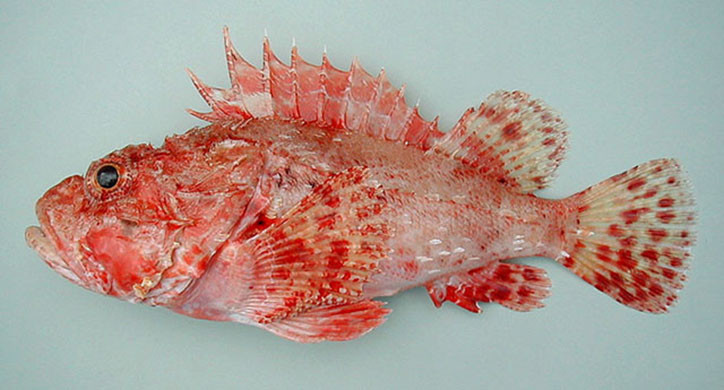
(Slender rockfish. Photo by © Pedro Niny Duarte(c)ImagDOP. fishbase.org)
It inhabits the depth of 75-800 meters, usually 100-600 meters. It prefers to swim close to the rocky bottom. The maximum recorded length is 50 cm, specimens about 30 cm long are more common. It feeds on fish, shrimps and other benthic invertebrates. It is a permanent inhabitant of the Adriatic Sea, which is more often found in its southern part. It is a rare species. The spines of the dorsal fin contain venom, which causes severe pain when pricking, and major complications are possible. The venom disintegrates by heat treatment.
Cadenat’s rockfish (Scorpaena loppei).
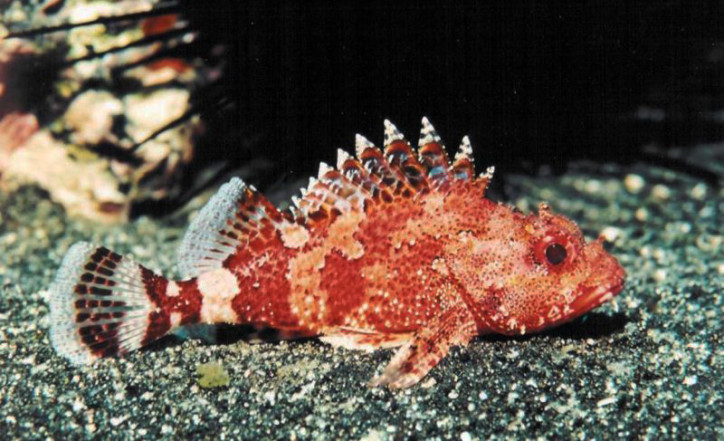
(Cadenat’s rockfish. Photo © reservasmarinas.net)
It inhabits the depth of 50-200 meters, prefers to swim close to the sandy, oozy and pebbly bottom. The maximum recorded length is 15 cm, specimens up to 10 cm long are more common. It feeds on crustaceans. It was found several times in the southern part of the Adriatic Sea. It is a rare species. The spines of the dorsal fin contain venom, which causes severe pain when pricking, and major complications are possible. The venom disintegrates by heat treatment.
Madeira rockfish (Scorpaena maderensis).

(Madeira rockfish. Photo by © Robert A. Patzner. fishbase.org)
It inhabits the depth of 20-40 meters. It prefers to swim close to the rocky bottom near the algae. The maximum recorded length is 14 cm. Specimens up to 10 cm long are more common. It feeds on small fish and crustaceans. It is a permanent inhabitant of the Adriatic Sea, which is more often found in its southern part. It is a rare species. The spines of the dorsal fin contain venom, which causes severe pain when pricking, and major complications are possible. The venom disintegrates by heat treatment.
Small red scorpionfish (Scorpaena notata).
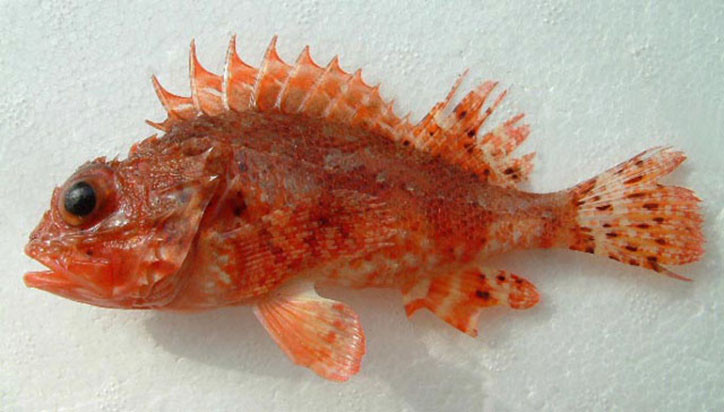
(Small red scorpionfish. Photo by © Fabio Crocetta. fishbase.org)
It inhabits the depth of 10-700 meters, prefers to swim close to the rocky bottom mainly near the coast. The maximum recorded length is 24 cm; specimens up to 12 cm long are more common. It feeds on crustaceans and small fish. It is a permanent inhabitant of the Adriatic Sea. The spines of the dorsal fin contain venom, which causes severe pain when pricking, and major complications are possible. The venom disintegrates by heat treatment.
Black scorpionfish (Scorpaena porcus).

(Black scorpionfish. Photo by © Achille De Sanctis. fisbase.org)
It inhabits the depth of 800 meters. It is a loner species. It prefers to swim close to the rocky or stony algous bottom. The maximum recorded length is 27 cm; specimens up to 15 cm long are more common. The maximum weight is 870 grams. It feeds on small fish, crustaceans and other invertebrates. It is a permanent inhabitant of the Adriatic Sea. The spines of the dorsal fin contain venom, which causes severe pain when pricking, and major complications are possible. The venom disintegrates by heat treatment.
Red scorpionfish (Scorpaena scrofa).
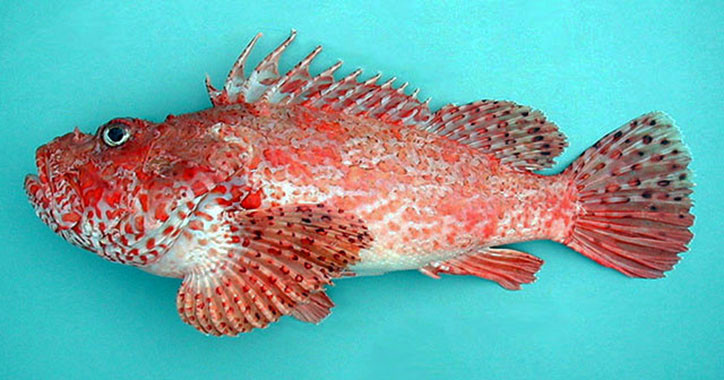
(Red scorpionfish. Photo by © Pedro Niny Duarte(c)ImagDOP. fishbase.org)
It inhabits the depth of 20-500 meters, usually up to 150 meters. It is a loner species. It prefers to swim close to the rocky, sandy and oozy bottom. The maximum recorded length is 50 cm; specimens up to 30 cm long are more common. The maximum weight is 3 kilograms. It feeds on fish, crustaceans and mollusks. It is a permanent inhabitant of the Adriatic Sea. The spines of the dorsal fin contain venom, which causes severe pain when pricking, and major complications are possible. The venom disintegrates by heat treatment.
Triglidae is a family that comprises about 125 fish species. They are near-bottom inhabitants, which are found at depths of up to 200 meters. The length of most species doesn’t exceed 40-50 centimeters, they weigh more than 5 kilograms. Most species have pectoral fins resembling wings. When a representative of the Triglidae family is caught, it can make quite loud sounds, resembling a croaking frog, due to the “drum” muscle, which contracts and beats the swim bladder of fish. Six lower rays of the pectoral fins, three on each side, are movable spurs used by fish to move along the bottom in search of food. The following eight representatives of the family are found in the Adriatic Sea:
Red gurnard (Chelidonichthys cuculus).
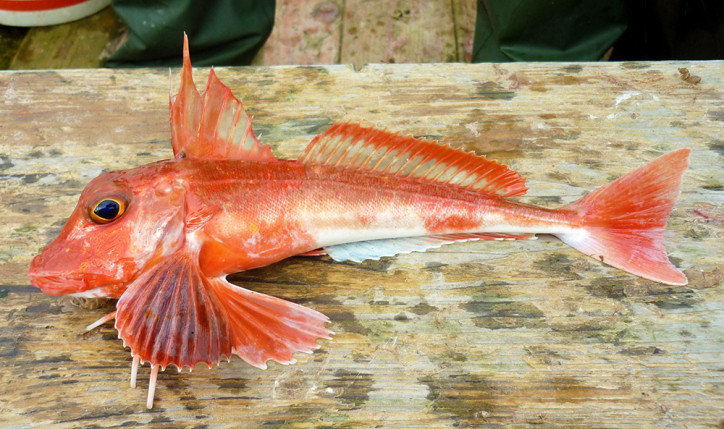
(Red gurnard. Photo by © nightfly. ispotnature.org)
It inhabits the depth of 15-400 meters, usually 30-250 meters. It prefers to swim close to the sandy, pebbly and rocky bottom. Sometimes it arranges schools. The maximum recorded length is 50 cm. Specimens about 20 cm long are more common. They feed on bottom crustaceans and other invertebrates, small fish. It is a permanent inhabitant of the Adriatic Sea.
Tub gurnard (Chelidonichthys lucerna).
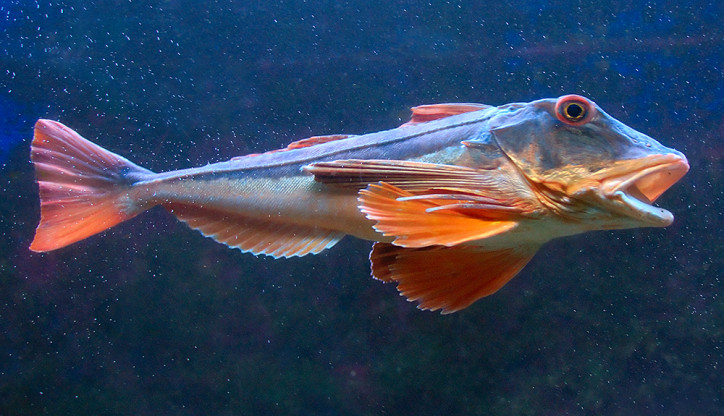
(Tub gurnard. Photo by © Luc Viatour. commons.wikimedia.org)
It inhabits the depth of 20-318 meters, prefers to swim close to the sandy, oozy and pebbly bottom. The maximum recorded length is 75 cm; specimens up to 30 cm long are more common. The maximum weight is 6 kilograms. It feeds on fish, crustaceans and mollusks. It is a permanent inhabitant of the Adriatic Sea.
Longfin gurnard (Chelidonichthys obscurus).
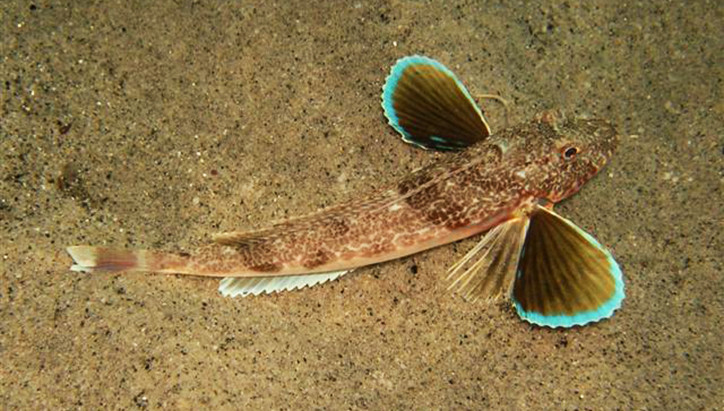
(Longfin gurnard. Photo by © Marco Cruscanti. fishbase.org)
It inhabits the depths of up to 170 meters. It prefers to swim close to the sandy and oozy bottom near the stones. The maximum recorded length is 34 cm. It feeds on bottom crustaceans and other invertebrates, small fish. It is a permanent rare inhabitant of the Adriatic Sea, which is more often found in its southern part.
Grey gurnard (Eutrigla gurnardus).
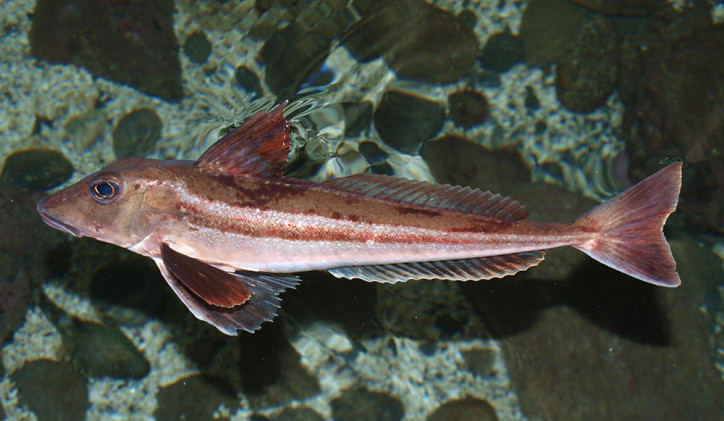
(Grey gurnard. Photo by © Olve Utne. alnakka.net)
It inhabits the depth of 10-340 meters, usually 10-150 meters. It prefers to swim close to the sandy, rocky, and less often – oozy bottom. The maximum recorded length is 60 cm, specimens up to 30 cm long are more common. It feeds on shrimps, crabs and small fish. It is a permanent inhabitant of the Adriatic Sea.
Large–scaled gurnard (Lepidotrigla cavillone).

(Large-scaled gurnard. Photo by © A.M. Arias. ictioterm.es)
It inhabits the depth of 100-190 meters. It prefers to swim close to the sandy and oozy bottom. The maximum recorded length is 20 cm, specimens up to 12 cm long are more common. It feeds on small benthic organisms. It is a permanent inhabitant of the Adriatic Sea.
Spiny gurnard (Lepidotrigla dieuzeidei).
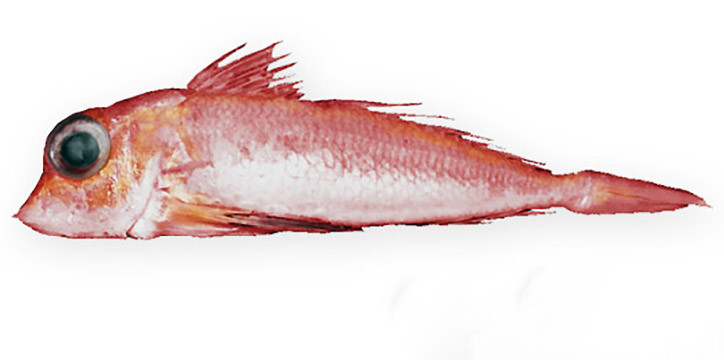
(Spiny gurnard. Photo by © Rafael Bañón. colapisci.it)
It inhabits the depth of 60-600 meters, usually 60-200 meters. It prefers to swim close to the sandy and oozy bottom. The maximum recorded length is 20 cm, specimens up to 12 cm long are more common. It feeds on crustaceans. It was found several times in the Adriatic Sea. It is a rare poorly studied species.
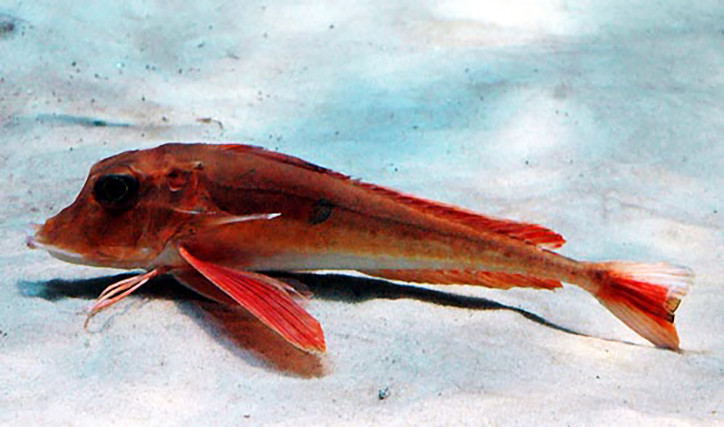
(Piper gurnard. Photo by © Jeff Dubosc. allfishes.net)
It inhabits the depth of 100-700 meters, usually 150-400 meters. It prefers to swim close to the oozy and sandy bottom. The maximum recorded length is 60 cm, specimens up to 30 cm long are more common. It feeds on shrimps and crabs. It is a permanent inhabitant of the Adriatic Sea.
Streaked gurnard (Trigloporus lastoviza).
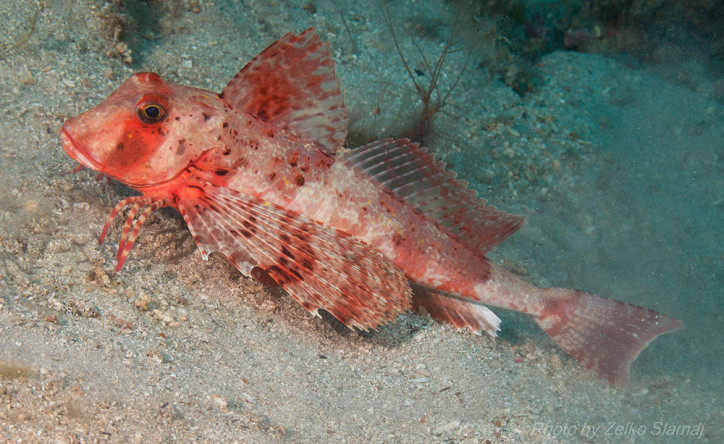
(Streaked gurnard. Photo by © Zelislav Rudolf “Zelko” Slamaj. flickr.com/photos/zelko_slamaj)
It inhabits the depth of 10-150 meters, usually up to 40 meters. It prefers to swim close to the rocky and sandy bottom. The maximum recorded length is 40 cm, specimens about 15 cm long are more common. It is a permanent inhabitant of the Adriatic Sea.
Dactylopteridae is a family, representatives of which have external resemblance with relatives from the Triglidae family, but recent scientific research, based on the DNA formula, have proved their isolation. It comprises 7 species, one of which is found in the Adriatic:
Flying gurnard (Dactylopterus volitans).
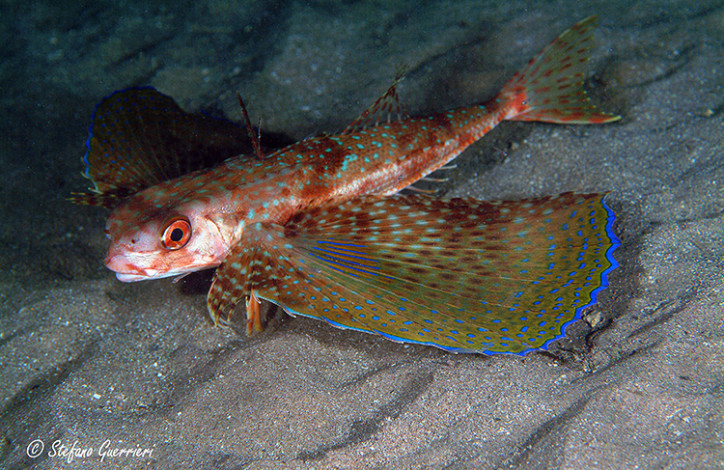
(Flying gurnard. Photo by © Stefano Guerreri. salentosommerso.it)
It inhabits the depth of 1-100 meters. It prefers to swim close to the sandy, oozy, stony-sandy bottom. The maximum recorded length is 50 cm; specimens up to 38 cm long are more common. The maximum weight is 1.8 kg. It feeds on crabs and other bottom crustaceans, small fish. It is a rare inhabitant of the Adriatic, which is found in its southern part.
The Peristediidae family comprises about 50 fish species, the largest of which can be 40 centimeters long, the average size varies from 15 to 20 centimeters. Two long bone spines, located above the mouth, directed forward and resembling a small fork, are a peculiar feature of the fish. The following representative of the family is found in the Adriatic Sea:
African armoured searobin (Peristedion cataphractum).
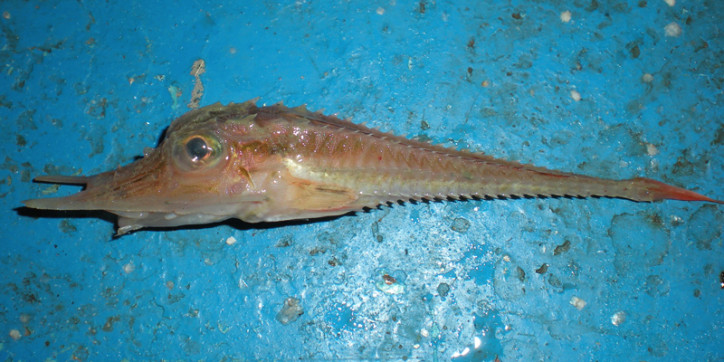
(African armoured searobin. Photo by © Massimiliano Marcelli. commons.wikimedia.org)
It inhabits the depth of 50-850 meters, usually up to 150 meters. It is a schooling species. It prefers to swim close to the oozy and stony bottom. The maximum recorded length is 40 cm; specimens up to 18 cm are more common. It feeds on small organisms living in the ooze. It is a permanent inhabitant of the Adriatic Sea, which is more often found in its southern part.
Cyclopteridae is a small family, which comprises about 30 fish species. They inhabit the temperate and cold waters of the Northern Hemisphere. Their body is spherical, devoid of scales, and covered with bony tubercles and small spines. They are found at the depths up to 1,700 meters. A representative of the family was found in the Adriatic Sea only once:
Lumpfish (Cyclopterus lumpus).
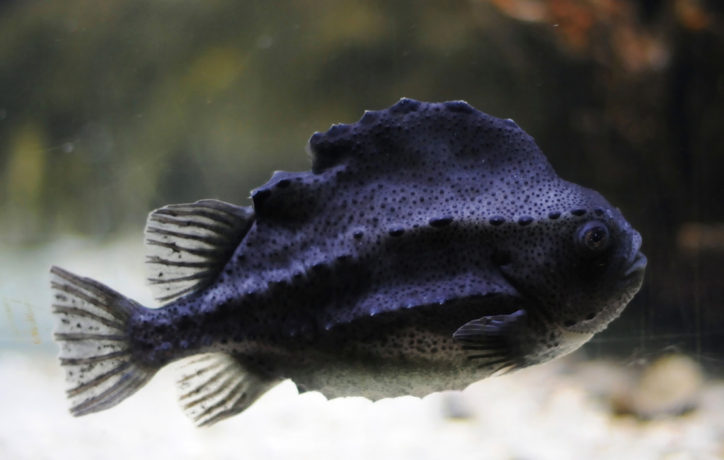
(Lumpfish. Photo by © Joachim S. Müller. flickr.com/photos/joachim_s_mueller)
It inhabits the depths of up to 870 meters, usually 50-150 meters. At night, it prefers to swim close to the bottom. In daytime, it swims closer to the surface. The maximum recorded length is 61 cm. The maximum weight is 9.5 kg. It feeds on ctenophores, jellyfish, small crustaceans, polychaetes, fish eggs and small fish. In the Adriatic Sea, a lumpfish was only once found in Molunat Bay in southern Croatia in 2004. It may have got into the Adriatic along with the ballast water of the ships.
Representatives of the Cottidae family are found around the world and inhabit both sea and fresh waters. The length of the fish varies from 5 cm to 1 m. The fish can weigh 14 kilograms (Scorpaenichthys marmoratus). Specimens about 10 centimeters long are more common. Species of the Cottidae family don’t inhabit the Adriatic, but three of them inhabit fresh water bodies of the countries, which have the Adriatic Sea coasts.
Bullhead, or European bullhead (Cottus gobio).
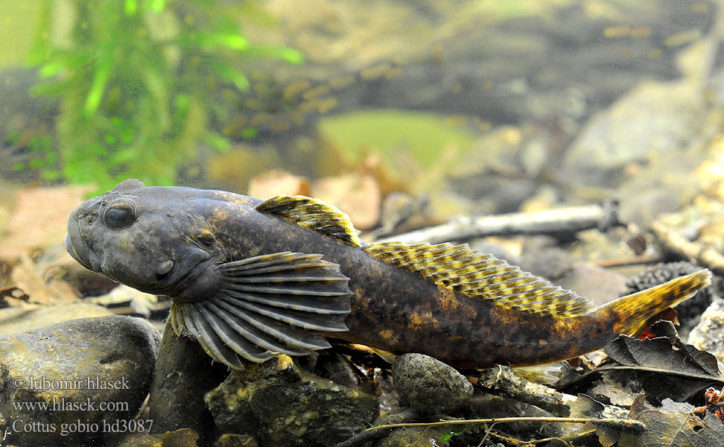
(Bullhead, or European bullhead. Photo by © Lubomir Hlasek. hlasek.com)
It inhabits small and medium-sized rivers with cold clear water and swift current. The maximum recorded length is 18 cm; specimens up to 10 cm long are more common. It feeds on small benthic invertebrates. It is the inhabitant of the water bodies of the northern part of Italy and the water bodies of the Danube basin of Bosnia and Herzegovina, Slovenia, Croatia and Montenegro.
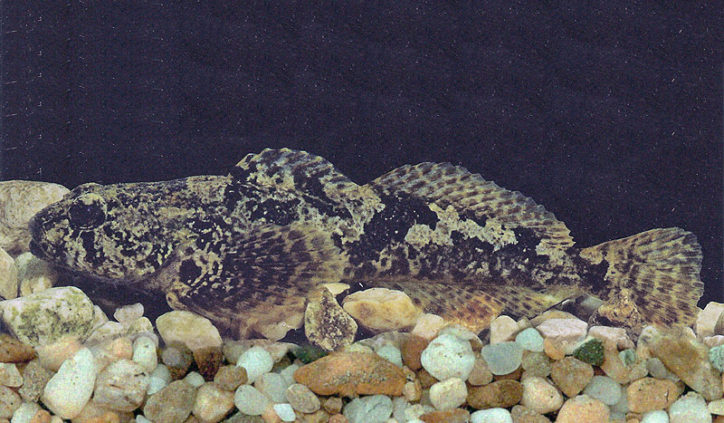
(Barje sculpin. Photo by © M. Kottelat, J. Freyhof. ittiofauna.org)
It inhabits the streams and small rivers with clear water. The maximum recorded length is 9.7 cm. It feeds on bottom invertebrates. It is an endemic from the Sava River Basin in Slovenia.
Timavo sculpin (Cottus scaturigo).

(Timavo sculpin. Photo by © Jörg Freyhof. arkive.org)
It inhabits the streams with cold water. The maximum recorded length is 6 cm. It feeds on bottom invertebrates. It is an endemic from the Timavo stream, north of Trieste, Italy. It is listed in the IUCN Red List as a Vulnerable Species (VS).